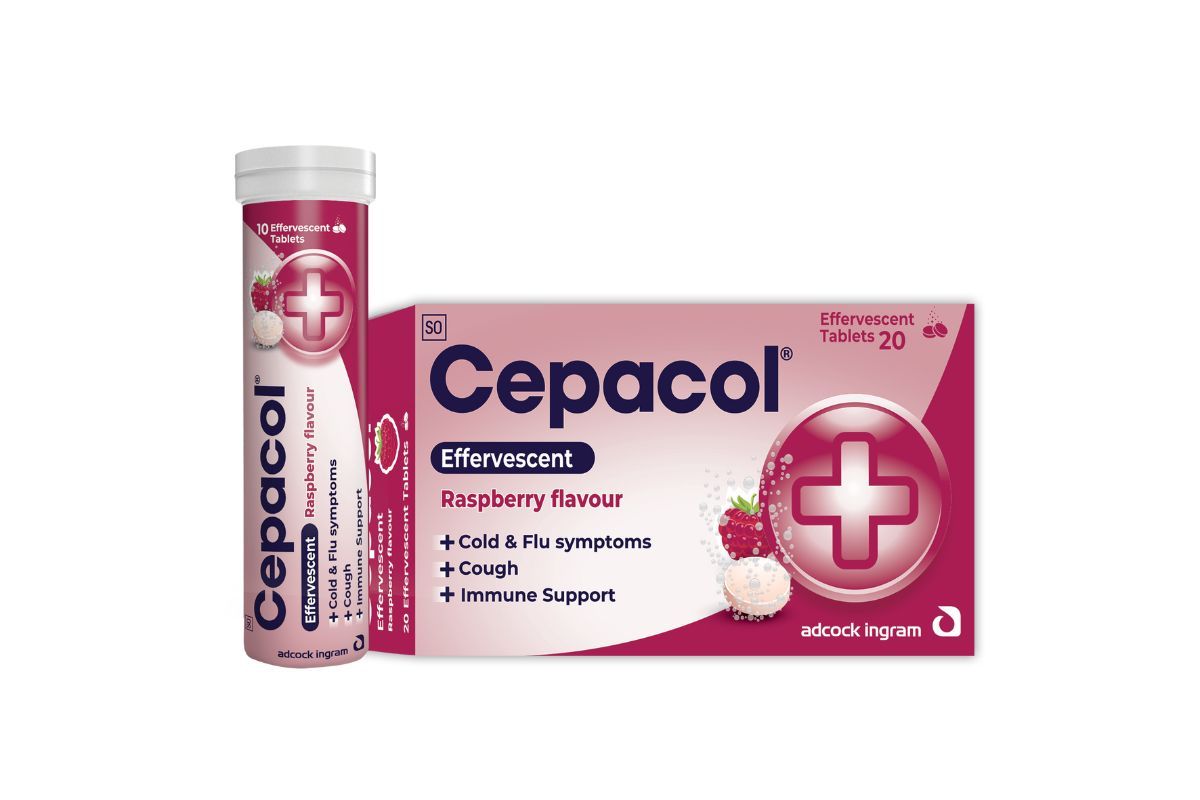Can a sore throat spread to others? The answer lies in what’s causing it. Cepacol®, known for its sore throat lozenges1, Medsip (hot medication)2&3, and now new raspberry-flavoured effervescent4, explores causes of sore throats and their potential for contagion.
What’s Behind That Sore Throat?
Ever had that scratchy, uncomfortable feeling in your throat? That’s often pharyngitis, which is a medical term for a sore throat.�Sore throats can arise from various culprits, ranging from infections to environmental irritants. Pinpointing the exact cause helps determine whether you’re at risk of spreading it to those around you5.
Viral Infections
Most sore throats are triggered by viruses.6Think of the common cold, where a dry and scratchy throat often kicks off the show, soon joined by a runny or stuffy nose, sneezing and maybe a mild cough.7a Then there’s the flu, which tends to hit harder, bringing a sudden, severe sore throat, fever and chills, muscle pain and body aches, headache, fatigue, and shortness of breath.7b And let’s not forget about coronavirus disease (COVID-19); while its symptoms vary, a sore throat is a frequently reported early sign of infection.7c
Bacterial Infections
Bacteria can also cause sore throats, with strep throat or whooping cough being common culprits. For these bacterial infections, you’re considered contagious when you start to experience your symptoms. 8aUnlike viral sore throats, which usually resolve on their own, bacterial infections require antibiotics8b to prevent complications. You’re typically considered no longer contagious after you’ve been on antibiotics for a period of time, which depends on the type of infection.8c�
Environmental and Lifestyle Factors
Not all sore throats are due to infections. For instance, physical factors like smoking, snoring, or even shouting can irritate your throat. Medical procedures such as tracheal intubation and certain medications might also contribute. Environmental elements – exposure to indoor and outdoor pollutants, extreme temperatures, low humidity, and hazardous or occupational irritants – can all lead to throat discomfort.9 Since these causes don’t involve infectious agents, they’re not something you can pass on to others.
How Do Contagious Sore Throats Spread?
If your sore throat is due to a viral or bacterial infection, it’s possible to spread it to others through indirect or direct contact. Direct contact involves touching an infected person, like through a handshake, and then touching your face, allowing the virus to enter your system.10a Indirect contact happens when an infected person coughs or sneezes, and the virus lands on surfaces like doorknobs or phones. If someone else touches these surfaces and then touches their face, they can become infected. 10b
Most infectious diseases, including respiratory viruses, are most contagious when symptoms peak. This means that during the height of your illness, you’re more likely to spread the virus to others.11 For bacterial infections like strep throat, you’re considered to be contagious when you start to experience symptoms,and typically considered no longer contagious after you’ve been on a regimen of antibiotics.8
Keeping the Germs at Bay
If you or someone in your household has a sore throat, taking steps to prevent spreading it is crucial. Practising good hygiene is a great start. Wash your hands frequently with soap and water for at least 20 seconds12a and use alcohol-based hand sanitisers if soap isn’t available.12b Cover your mouth and nose with a tissue or the crook of your elbow when you cough or sneeze.12c Regularly disinfect commonly touched surfaces and objects12d like doorknobs and light switches. Staying home when you’re sick12e not only helps you recover but also prevents spreading illness to others.�
When To See A Doctor
While a sore throat usually goes away, if you experience a severe sore throat accompanied by a fever exceeding 38.3° C that persists beyond one to two days, difficulty sleeping due to obstructed breathing from swollen tonsils or adenoids, or the appearance of a red rash, it’s time to see a doctor.13
Beat The Scratch With Cepacol® New Raspberry-Flavoured Effervescent4�
Life doesn’t pause for a sore throat, and neither should you. Cepacol® recognises that when discomfort strikes, you need swift relief to keep up with your daily activities. That’s why we’ve developed a diverse range of products tailored to provide targeted comfort, including our latest innovation: the Cepacol® Effervescent – a fizzy raspberry-flavoured effervescent provides double-duty relief for the whole family (children 6 +).�
Cepacol® Effervescent4 helps to relief symptoms of cold and flu such as sore throat, nasal congestion, sneezing and cough, opening of the airways, thinning of mucus and providing relief of coughs associated with inflammation of the airways. It also supports the immune function within the upper respiratory tract and provides antioxidant support for the maintenance of good health.
In addition to Cepacol®’s newly launched raspberry-flavoured effervescent4, theCepacol®range includes cough and cold syrup14, Plus cough and cold syrup15�specifically designed for nighttime relief, a throat spray16and throat gargle17, Medsip, a hot medicated drink2&3 in either ginger or honey lemon flavours, and antibacterial throat lozenges1 in four great tasting flavours – regular, black current, honey & lemon and menthol.�
So, when you’re dealing with a stuffy nose, cough and scratchy throat, remember, there’s a Cepacol® for that!
Embrace the Winter Warrior within, with Cepacol®
As we brace ourselves for the winter months, it’s wise to be prepared. Adcock Ingram’s Winter Warriors 2025 Campaign offers a range of products aimed at combating common cold and flu symptoms. With brands like Cepacol®, Panado®, Compral®, ProbiFlora™, Gummy® Vites and ViralGuard™, you can arm yourself and your loved ones against the seasonal sniffles.
Cepacol®‘s range of products is now available at leading pharmacies and retailers nationwide. For more information and references, visit the website and join the conversation on Facebook.










